Click on images to enlarge

habit in flower (Photo: Sheldon Navie)

habit in fruit (Photo: Sheldon Navie)
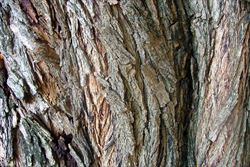
rough bark on mian trunk (Photo: Sheldon Navie)

leaves and flowers (Photo: Sheldon Navie)
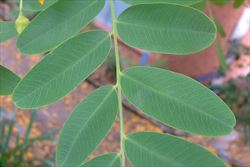
close-up of leaflets with notched tips (Photo: Sheldon Navie)

flower clusters (Photo: Sheldon Navie)

close-up of golden yellow pea-shaped flowers with reddish markings (Photo: Sheldon Navie)

immature fruit (Photo: Sheldon Navie)
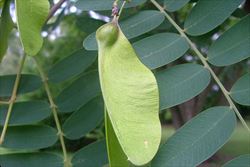
close-up of immature fruit with large wing (Photo: Sheldon Navie)
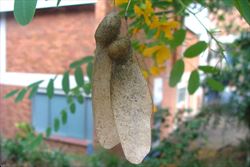
mature fruit (Photo: Sheldon Navie)

close-up of mature fruit on the ground (Photo: Sheldon Navie)
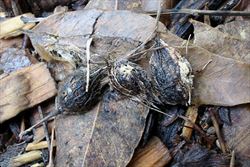
old fruit (Photo: Sheldon Navie)
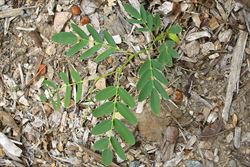
young plant (Photo: Sheldon Navie)
Scientific Name
Tipuana tipu (Benth.) Kuntze
Synonyms
Machaerium tipu Benth.
Family
Fabaceae (Queensland, the ACT, Victoria, Tasmania and the Northern Territory)Fabaceae: sub-family Faboideae (New South Wales)Leguminosae (South Australia)Papilionaceae (Western Australia)
Common Names
pride of Bolivia, pride-of-Bolivia, race-horse tree, race-horse tree, racehorse tree, rose wood, rosewood, tipu tree, tipuana, tipuana tree, tiputree, yellow jacaranda
Origin
Native to South America (i.e. southern Bolivia, northern Argentina, southern Brazil, Uruguay and Paraguay).
Cultivation
Widely cultivated as a garden and street tree, particularly in the warmer regions of Australia. It has occasionally also been cultivated as a shade and fodder tree.
Naturalised Distribution
This species is becoming widely naturalised in south-eastern and central Queensland. It is possibly also naturalised in northern New South Wales.
Also widely naturalised in southern Africa (i.e. South Africa and Swaziland).
Habitat
A weed of roadsides, disturbed sites, waste areas, open woodlands, riparian vegetation and urban bushland in sub-tropical and tropical regions.
Habit
A fast-growing and spreading tree quickly reaching 15 m tall, and capable of growing up to 30 m or more in height.
Distinguishing Features
- a large and quick-growing tree with rough bark on its main trunk.
- its once-compound leaves haveseveral oval or blong leaflets (2.5-7 cm long and 1.3-2.3 cm wide).
- it produces masses of yellow pea-shaped flowers during summer.
- these are followed by distinctive winged fruit (4-7 cm long) that rotate as they fall to the ground.
Stems and Leaves
The bark on the main trunk is rough and fissured and the younger branches are often drooping or weeping in nature.
The leaves are once-compound with several paired leaflets and a single terminal leaflet (i.e. they are imparipinnate). These leaves (with 9-29 leaflets) are alternately arranged along the stems and borne on stalks (i.e. petioles) 15-20 mm long. The leaflets are oval (i.e. elliptic) or oblong in shape (2.5-7 cm long and 1.3-2.3 cm) with a rounded or notched tip (i.e. obtuse or retuse apex).
Flowers and Fruit
The flowers are borne in elongated clusters (5-11 cm long) in the upper leaf forks and at the tips of the branches (i.e. in axillary and terminal racemes). They are yellow or yellow-orange in colour, pea-shaped and about 2 cm across. Each flower has a large upper petal (i.e. standard) with reddish-coloured markings at its base, two side petals (i.e. lateral or wing petals), and a folded lower petal (i.e. keel) that is actually made up of two fused petals. They also have five small green sepals (7-9 mm long), that are fused together into a tube at the base (i.e. calyx tube), and ten stamens. Flowering occurs mostly during early summer.
The winged fruit (i.e. samara) contain one to three reddish seeds. It has a hard rounded base and a large thin wing (4-7 cm long) that causes the fruit to rotate as it falls to the ground. These fruit turn from green to pale brown in colour as they mature.
Reproduction and Dispersal
This species reproduces only by seed. The seeds are readily dispersed by wind and are also spread by water.
Environmental Impact
Tipuana (Tipuana tipu) is regarded as an environmental weed in Queensland and as a potential environmental weed in other parts of Australia. It is on the Alert List for Environmental Weeds, a list of 28 introduced plants that are currently not very widespread but are considered to pose a threat to Australia's environment.
Legislation
Not declared or considered noxious by any state government authorities.

